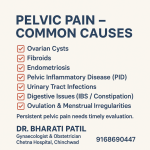Cataracts are a common eye condition, particularly in older adults, that can lead to vision impairment or even blindness if left untreated. They occur when the lens of the eye becomes cloudy due to protein buildup, preventing light from passing through clearly. While cataracts often develop slowly, understanding their stages can help in early detection and timely treatment. This guide delves into the different stages of cataracts and how they impact vision.
What Are Cataracts?
A cataract is a clouding of the lens inside the eye. The lens plays a crucial role in focusing light onto the retina for clear vision. When the lens becomes cloudy, it scatters or blocks light, resulting in blurry or dim vision. Cataracts typically develop with age but can also result from trauma, medical conditions like diabetes, prolonged UV exposure, or certain medications.
Cataracts are categorized into five distinct stages, each representing a different level of severity and impact on vision.
Stage 1: Early Stage (Immature Cataract)
The early stage of cataracts is often subtle and may go unnoticed. The cloudiness in the lens is minimal, and the patient’s vision remains relatively clear.
Symptoms:
- Mild sensitivity to light (glare).
- Slight difficulty seeing at night or in low-light conditions.
- Vision may seem a little blurred at times.
Impact:
At this stage, cataracts rarely interfere with daily activities. Regular eye exams can help detect early cataracts and monitor their progression.
Advice:
If detected early, lifestyle changes like wearing sunglasses, eating a diet rich in antioxidants, and avoiding smoking can slow the progression.
Stage 2: Developing Stage
As the cataract progresses, it starts affecting daily life. Vision becomes more noticeably blurred, and corrective measures like glasses or contact lenses are less effective.
Symptoms:
- Blurry or cloudy vision.
- Frequent changes in eyeglass prescriptions.
- Increased sensitivity to light and glare.
- Reduced contrast perception, making it harder to distinguish objects.
Impact:
Patients may struggle with activities like reading, driving at night, or recognizing faces.
Advice:
At this stage, an ophthalmologist may recommend surgery as an option, especially if the cataract significantly impacts quality of life.
Stage 3: Mature Stage
In the mature stage, the cataract becomes significantly denser and more opaque. The lens appears visibly cloudy, and vision impairment is more pronounced.
Symptoms:
- Severe difficulty seeing clearly, even in good lighting.
- Colors may appear dull or yellowed.
- Difficulty performing tasks that require precision, such as reading fine print.
Impact:
The quality of life is significantly reduced as the patient’s independence diminishes. Activities like driving and working may no longer be possible.
Advice:
Cataract surgery is strongly recommended at this stage to prevent further vision deterioration and associated complications.
Stage 4: Hyper-Mature Stage
At this stage, the cataract lens becomes hardened and can lead to complications, such as inflammation or increased pressure in the eye. The risk of permanent vision loss or damage to other parts of the eye increases significantly.
Symptoms:
- Severe cloudiness and blurred vision.
- The lens may shrink or change shape.
- Potential for eye pain or redness due to complications.
Impact:
Vision impairment is profound, often bordering on blindness. Patients may also experience significant discomfort due to secondary complications.
Advice:
Immediate surgical intervention is necessary at this stage to prevent permanent eye damage.
Stage 5: Morgagnian Cataract (Rare Advanced Stage)
This is the most advanced stage of cataracts, where the lens fibers completely disintegrate, often resulting in total blindness. This stage is rare, as most patients undergo treatment before cataracts reach this level.
Symptoms:
- Complete loss of vision in the affected eye.
- Potential complications like lens dislocation or glaucoma.
Impact:
Severe vision loss can have a devastating effect on mental health, mobility, and overall well-being.
Advice:
Emergency cataract surgery is critical at this stage to restore vision and prevent irreversible damage.
Cataract Treatment Options
The only effective treatment for cataracts is surgery, which involves removing the cloudy lens and replacing it with an artificial intraocular lens (IOL). Modern cataract surgeries are highly successful, minimally invasive, and typically performed on an outpatient basis.
Types of Surgery:
- Phacoemulsification (Phaco Surgery): A small incision is made, and the cataract is broken into tiny pieces using ultrasound waves and removed.
- Extracapsular Cataract Extraction (ECCE): The cloudy lens is removed in one piece through a larger incision.
- Femtosecond Laser-Assisted Cataract Surgery (FLACS): An advanced laser replaces traditional surgical tools for greater precision.
Lens Options:
- Monofocal Lenses: Provide clear vision at one distance.
- Multifocal Lenses: Offer vision correction for near and far distances.
- Toric Lenses: Correct astigmatism.
When to Consider Surgery
Deciding the right time for surgery depends on individual circumstances. Surgery is recommended when cataracts begin to interfere with daily life or pose a risk of complications. Some signs that surgery may be needed include:
- Difficulty performing everyday activities like reading or driving.
- Reduced independence due to poor vision.
- Inability to manage glare or bright light.
Conclusion
Cataracts are a common yet treatable cause of vision loss. Understanding the stages of cataract development empowers patients to seek timely care and avoid complications. Modern surgical techniques have made cataract treatment highly effective, restoring clear vision and improving quality of life.
If you’re experiencing symptoms like blurry vision, glare, or difficulty with daily tasks, consult an ophthalmologist for a comprehensive eye exam. Early intervention can help you see the world clearly once again.
For Consultation Contact us on 9168690448
Website – www.chetnahospital.co.in
Address – Chetna Hospital, Sambhajinagar, MIDC, G Block, Near Rotary Club, Chinchwad 411019
.
.
.
#hospital#pune#pcmc#chinchwad#medical#medicalservices#dryeyetreatment#dryeyerelief#dryeyedisease#dryeyetherapy#catract#catractsurgery#catracteyesurgery#catracteyeoperation#eyedoctor#eye#glaucoma#conjunctivitis#ophthalmologist#eyediseases#eyepain#pinkeye#hazeleyes#myopia#eyeinfection#amblyopia#dryeyesyndrome#eyeproblems#motibindu#motibinduoperation













